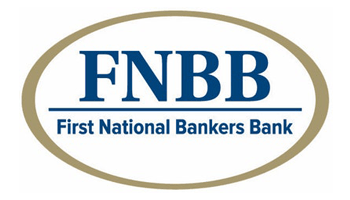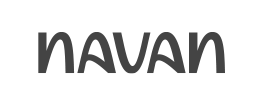Managing the financial close: Traditional challenges and challenging tradition
Even without being acquainted with the craft of accountants, many have picked up stories about the gravity of the financial close. A nerve-racking event which takes place every year-end and originates numerous anecdotes and memes.
What is financial close?
The financial close is a crucial process that rounds off the daily efforts of the finance and accounting teams to capture, measure, record, classify, report and analyse every single business operation. It is a mean to one end – to periodically draw up the complete and precise account of the company’s commercial choices and let the stakeholders assess the results.
Without oversimplifying it, the financial close is essentially a revision and summary of the financial account movements applicable for the past period. This overhaul ensures that numbers are double-checked, verified and all parties have fulfilled their obligations.
The close process is time-sensitive, has little tolerance for errors or inconsistencies and requires a lot of coordination. Failing on either of these points not only defeats its purpose, but can also bring consequences or even penalties. The output of the close is scrutinised by the company management, shareholders, and potentially tax and regulatory authorities – especially in the context of publicly owned companies or the financial industry.
Although the high-level blueprint of the process is quite similar for all business, the mechanisms of conducting a financial close can vary greatly depending on industry, size and structure, and legal requirements. Companies develop and tweak their own close process. Some of the process elements could be overemphasized while others may be omitted altogether. For instance – a US bank would adhere to SOX and SEC compliance guidelines. But a private manufacturing company in the EU would look out for its inventory and payables/receivables. Both would closely inspect their cash, tax and asset account positions.
Old habits die hard
Given the critical importance of closing the books accurately and on time, one would assume that cutting-edge technology is harnessed to run the whole campaign. However, this is not the common case. Many accounting departments still grapple with outdated systems or manual methods. Most of the grievances around the financial close are inflicted by poor infrastructure and suboptimal logistics.
The financial close is a recurring multi-step process. It is established around a tree of codependent tasks delimited in sequence, assignment and timeframes. Every single account balance is reexamined and substantiated in a logical order depending on its volume and risk characteristics. The data is aggregated for statutory reporting.
To manage the close process, accounting departments usually follow a template in the form of a task checklist in a shared spreadsheet. Regardless of company type, the challenges are similar. Firstly, it can be challenging to pinpoint who does what, when or why, and get at-a-glance view of how the close is progressing – something which finance executives are deeply interested in. The process owner and the process designer can be two different people. The unstructured process stifles knowledge transfer and as soon as key personnel are lost, knowledge gaps surface in the most inconvenient times.
Account reconciliation is often at the heart of the financial close. Best practices dictate that key balance sheet accounts go through reconciliation and certification with at least two approval levels. Often trial balances are updated several times a day, resetting the approval cycle. Open transactions tend to pile up in the run-up to the cut-off date. Their posting and verification can linger because of general ledger processing downtime or standing by for other departments’ input. Communication bottlenecks are a big pain point.
Balance adjustments should be properly documented along with evidence but the absence of process standards and a unified repository backfires during auditing. If the audit trail comprises a bunch of signed printouts, emails and fleeting notes, the integrity of the process could be questioned.
For some companies, the financial close could be even more expansive, covering aspects such as the analysis of month-to-month variances or the preparation and approval workflow of missing journal entries. These requirements must then be coordinated with account reconciliation and other close tasks to complete the entire process.
There must be a better way
In the context of the financial close, pressure to meet these high standards within strict deadlines often collides with an inefficient process framework. As a result, accountants rush through errands without clear perspective of the big picture. Add the struggles of repetitive manual operations, constant switching between screens, excessive progress checks and reporting requests further hurting productivity. People try to compensate with long stressful hours and compromises with precision – hence the infamous reputation of the close.
Companies interested in maximising productivity and financial control, as well as improving work-life balance, have seized the opportunity to dismantle this rollercoaster and profoundly reform their financial close process.
The pursuit of improvement inevitably confronts with fear of change or becoming redundant and clinging to the familiar. Accounting folks are prudent about novelties in their sphere, partly because of disappointing experiences with less than ideal software solutions. They evaluate fintech innovations in practical terms: Does it do the job reliably? Is it tailored for my needs? Is the learning curve steep and will I be able to manage it independently? Are costs commensurate to benefits?
Problem solved
Being a recurring and quite invariable process, the financial close is perfectly suited to automation. The primary challenge for a sustainable software solution to address is the coherent and flexible incorporation of all essential financial close components – task management, account reconciliation and certification, journal entries creation, variance analysis of the account balances, and intercompany reconciliations.
ReconArt covers all the bases and brings forward a versatile, integrated, best practice platform which permanently replaces fragmentary and inefficient workarounds.
The solution automates all reconciliations related to the period-end close – the continuous upload and matching of updated trial balance data, the monitoring of tasks progress and completion in line with the assigned roles and separation of duties, the account balance justifications and approval workflows, the initiation of journal entries, the variance analysis of balance fluctuation across accounting periods.
The platform’s flexible configurability allows for a thorough mapping of the customer’s close process into a secure SaaS environment. Business specifics and internal policies are observed and users construct and administrate their processes independently. Period-end process know-how is no longer vested in informal institutional knowledge.
The lists of to-do items are organised hierarchically in calendars and pushed through machine-driven workflow where roles are strictly encoded and users are prompted to take action. Therefore, task follow-up to completion is guaranteed and status is reported in near-real time.
Accounting teams will find it beneficial to have their task checklists dynamically updated and visible in one system together with all their reconciliations data and accompanying documentation – the connections between account balance and the matched transaction forming that balance is made evident. The system maintains a granular audit trail and centralised recon data repository – ranging from a detailed log of operations to automatic controls and links to notes and attachments.
The tool is highly adaptive to changing business needs such as introduction of new business lines or organisational changes, remote teams, home office. It supports continuity, process audit and improvement initiatives.
The streamlined financial close brings transparency and predictability, remedies frustration, saves time and improves efficiency. Automation of manual operations transfers the heavy lifting to machines and makes room for precision and in-depth accounts analysis. Complete audit readiness with all reconciliation data, supporting documentation, task assignments, and progress tracking tools in one place is well within reach in a neat, simple to navigate environment. The bonus? No “heart attack” at period-end.
A special ReconArt feature first published on Bobsguide – the ultimate fintech resource, an innovative online platform that connects the providers of fintech solutions with the financial services professionals who need them.
Read the article here as well.

 follow our blog
follow our blog






















 Quick response
Quick response

